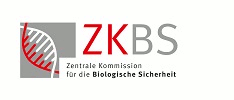Details zum Onkogen
| FGF2 und shRNA* | |
| BFGF; FGFB; FGF-2; HBGF-2 | |
| Homo sapiens | |
| growth factor; ligand of the FGF-receptor family; involved in cell survival, division, differentiation and migration | |
| ohne Gefährdungspotential | |
| FGF2 expression is up-regulated in prostate cancer [1]. Overexpression of FGF2 in a fibroblast cell line increases proliferation, but does not result in contact inhibition independent growth [2]. The treatment of primary human astrocytes with exogenous FGF-2 protein increased the proliferation, but does not affect the contact inhibition [3]. The siRNA-mediated knockdown of FGF2 in a esophageal cancer cell line inhibits proliferation, migration and invasion, whereas the cultivation with exogenous FGF2 protein increases this effects [4]. In a murine xenograft assay the injection of fibroblasts overexpressing FGF2 does not result in tumor formation [2]. Die Ursächliche Beteiligung an der Entstehung von Tumoren ist nicht gezeigt. | |
| [1] Soulitzis, N. et al., Int J Oncol, 2006, 29 (2), 305–314. doi: 10.3892/ijo.29.2.305. [2] Yayon, A. et al., Cancer Metastasis Rev, 1990, 9 (3), 191–202. doi: 10.1007/BF00046360. [3] Joy, A. et al., Oncogene, 1997, 14 (2), 171–183. doi: 10.1038/sj.onc.1200823. [4] Shi, H. et al., Cell Biol Int, 2016, 40 (5), 524–533. doi: 10.1002/cbin.10588. | |

